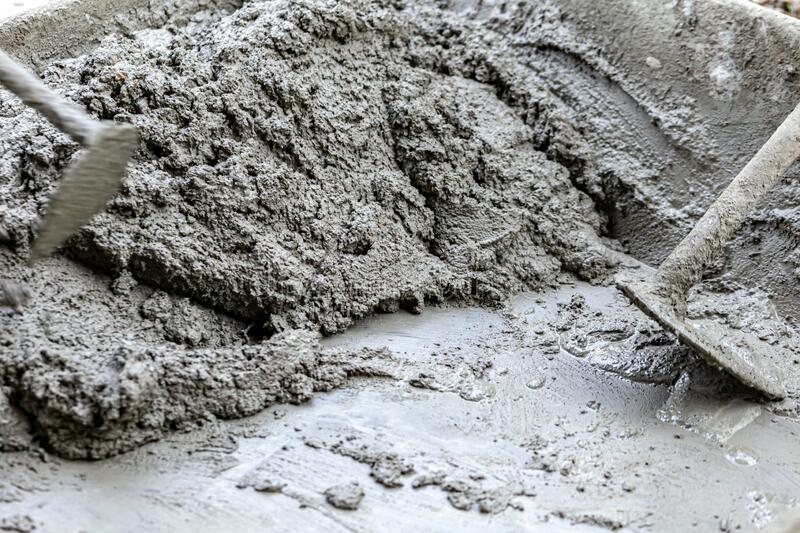What is Mortar ? PROPERTIES of Mortar ,PROPERTIES OF GOOD MORTAR,USES & types of Mortar
Mortar:-
Mortar is a bonding agent which is generally produced by mixing cementing or binding material (lime or cement) and fine aggregate (sand , surki, sawdut, etc.) with water. Mortar is used to bind different building blocks like Brick stones, etc. It can also add a decorative pattern in brick or stone masonry. Mortar is being used since the dawn of civilization. 2000 years ago, the Egyptians used lime mortars.
- Types of Mortar
- Properties o good Mortar
- The Functions of Sand in Mortar
- Uses of Mortar
- Precautions Required while using Mortar Mix
- Lightweight Mortar
PROPERTIES OF GOOD MORTAR
It is always desirable to use the best mortar in constructions. Therefore, the properties of a good mortar must be investigated. Generally, good mortar possesses following properties-
- The main quality that mortar should possess is adhesion. Good mortar should provide good adhesion to building units (bricks, Stones etc).
- Mortar should be water resistant. It should have the capability of resisting the penetration of water.
- Deformability of mortar should be low.
- Mortar should be cheap.
- Mortar should be easily workable in the site condition.
- The mobility of mortar should be good. It helps the mortar to be paved thinly and evenly.
- It should possess high durability.
- To improve the speed of construction, good mortar should set quickly.
- Cracks should not be developed in the joint formed by mortar. It is desirable to last for long period of time without losing the appearance.
PROPERTIES OF GOOD MORTAR
Followings are the functions of sand as one of the ingredients of mortar.
- Generally, sand is not used in the mortar to increase its strength. Rather it is mainly used as an inert material to increase the volume of mortar for the economy.
- Using sand in the right amount can produce cheap mortar without hampering mortar strength.
- Sand subdivides the paste of cementing materials into a thin film which is the basic principle involved in using all cementing materials.
- Sand offers the requisite surface area for the film of cementing materials to adhere and to spread.
- Sand helps to prevent mortar shrinkage. It also prevents cracking of mortar during setting.
- Well-graded sand increases the density of mortar.
- Sand allows Carbon-Di-oxide from the atmosphere to reach to some depth in case of ft lime mortars and thereby improves their setting capability.
- It is also claimed that some chemical reaction takes place between silica (SiO2) of sand grains and the constituents of the cementing materials to form a hardened mass.
USES OF MORTAR
Mortar, a bonding agent between building materials, is mainly a mixture of water, fine aggregate (sand, surki, etc) and binding material like cement, lime etc. The applications of mortar in various construction phase have made it a very important civil engineering material.
Some of the numerous functions of mortar in construction are given below.
- Mortar is used to bind together the bricks or stones in brickor stone masonry.
- It is used to give a soft even bed between different layers of brick or stone masonry for equal distribution of pressure over the bed.
- It is used to fill up the spaces between bricks or stones for making walls tight.
- It is used in concrete as a matrix.
- It is used in plastering works to hide the joints and to improve appearance.
- It is used for molding and ornamental purpose.
TYPES OF MORTAR
Mortar is produced by mixing a binding material (cement or lime) with fine aggregate (sand, surki, etc) with water. For construction purpose, different types of mortar are used. Depending upon the materials used for mortar mixture preparation, the mortar could be classified as follows.
- Cement Mortar
- Lime Mortar
- Surki Mortar
- Gauged Mortar
- Mud Mortar
Cement Mortar
Cement mortar is a type of mortar where cement is used as binding material and sand is used as fine aggregate. Depending upon the desired strength, the cement to the sand proportion of cement mortar varies from 1:2 to 1:6.
Lime Mortar
Lime mortar is a type of mortar where lime (fat lime or hydraulic lime) is used as binding material and sand is used as fine aggregate. The lime to the sand proportion of cement mortar is kept 1:2. The pyramids at Giza are plastered with lime mortar.
Gauged Mortar
Gauged mortar is a type of mortar where cement and lime both are used as binding material and sand is used as fine aggregate. Basically, it is a lime mortar where cement is added to gain higher strength. The process is known as gauging. The cement to the lime proportion varies from 1:6 to 1:9. Gauged mortar is economical than cement concrete and also possess higher strength than lime mortar.
Surki Mortar
Surki mortar is a type of mortar where lime is used as binding material and surki is used as fine aggregate. Surki mortar is economic.
Mud Mortar
Mud mortar is a type of mortar where mud is used as binding material and sawdust, rice husk or cow-dung is used as fine aggregate. Mud mortar is useful where lime or cement is not available.
tags: mortar types, mortar mix, mortar cement, mortar for brick, mixture of sand and cement, cement masonry, mortar types for brick, brick mortar types, mortar ratio for brick masonry, masonry mortar types.

